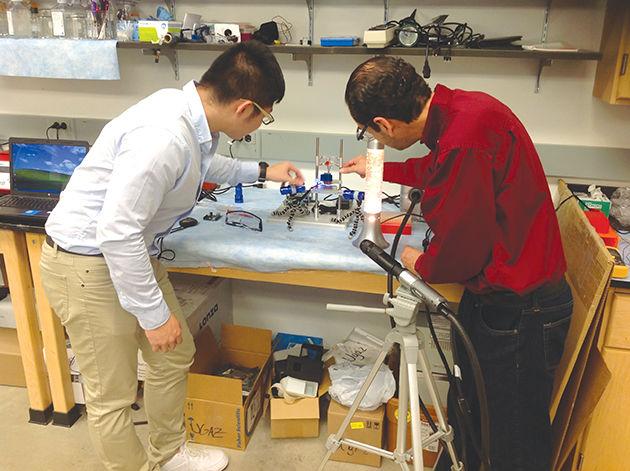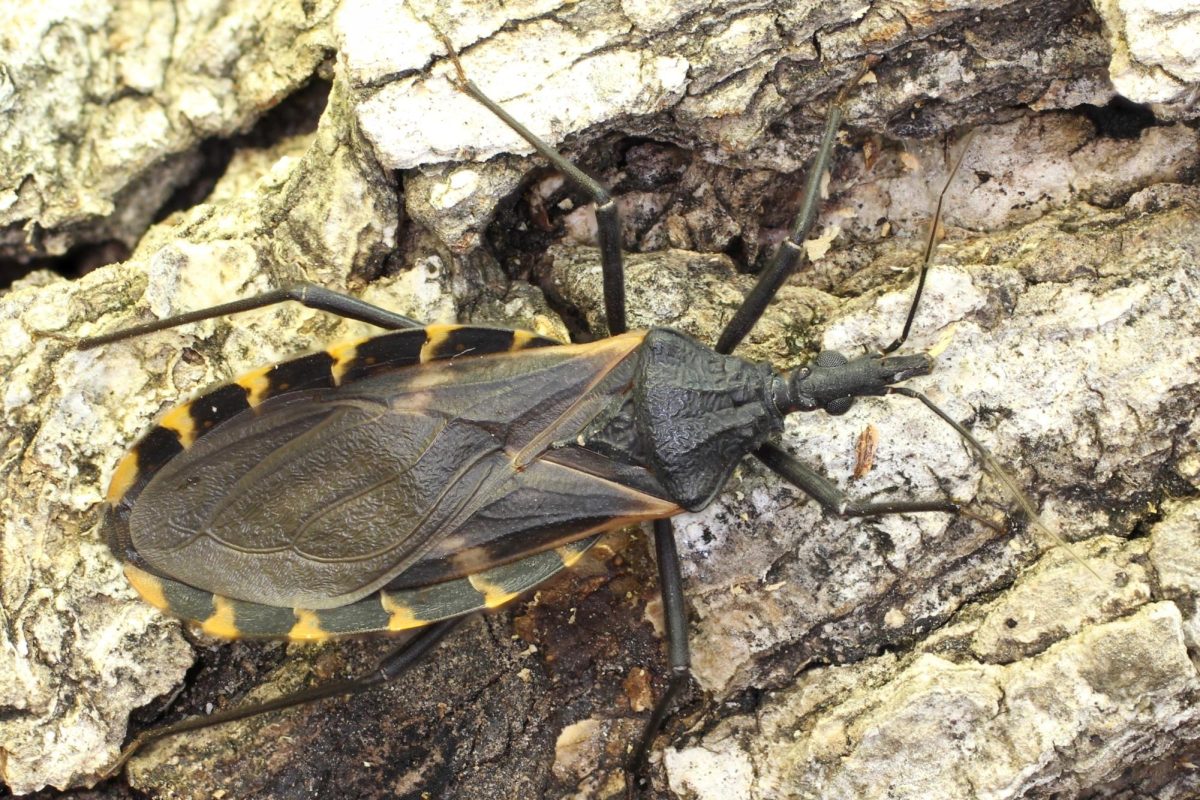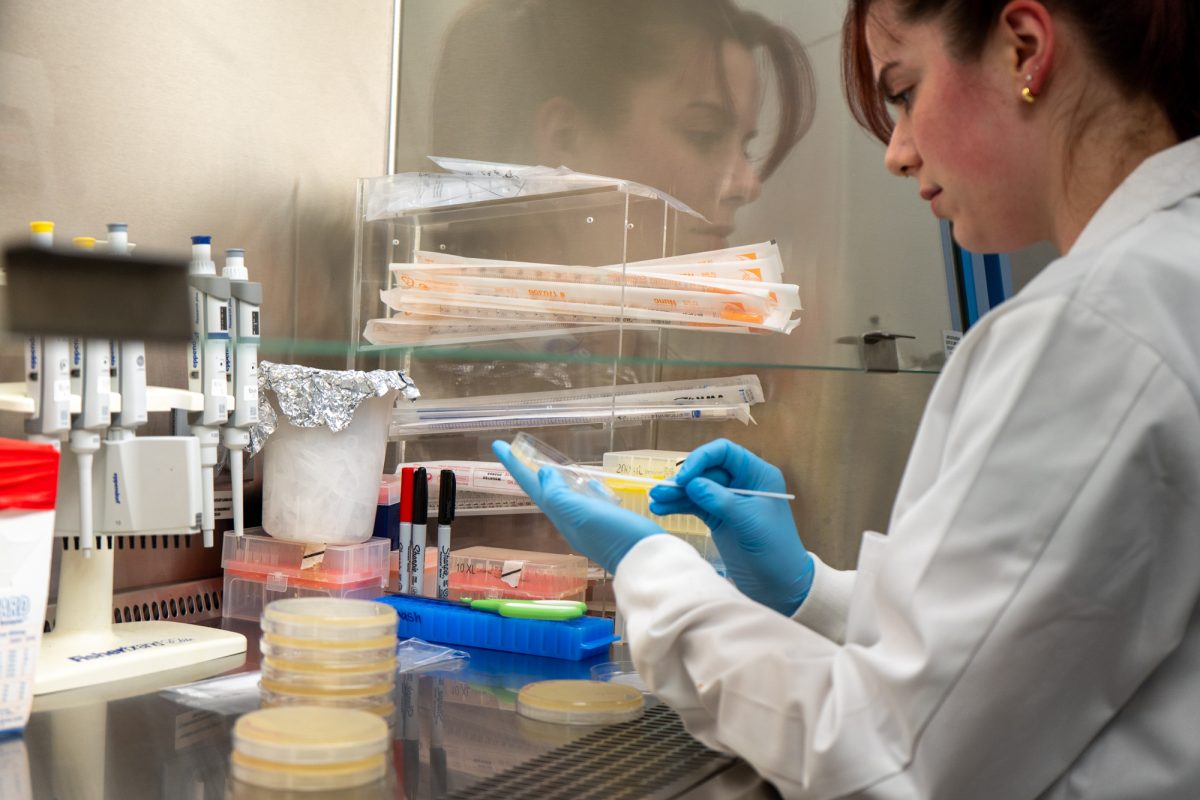A team of researchers at A&M has been working on an alternative theory for how life developed on Earth, and it could affect the way scientists look for extraterrestrial life on other worlds.
A team led by Victor Ugaz, associate professor of chemical engineering, sought to uncover how the organic molecules in Earth’s early oceans could have become concentrated enough to combine and form the first lifeforms, since, on average, the oceans did not have a high enough concentration of these particles.
According to Ugaz, the answer can be explained by lava lamps on a microscopic scale.
“You heat a fluid from below with a light bulb, and then it causes a density change,” Ugaz said. “The fluid near the bottom is warmer, so it’s lighter, and it rises, and then the fluid near the top is cooler, so it sinks.”
Lava lamps, according to Ugaz, are designed to maintain a constant flow of liquid inside them. But this was difficult to replicate on the microscopic scale, and according to Yuncheng Yu, a chemical engineering senior on the team, it took years to do.
“The previous Ph.D. student — he actually did some computational simulation,” Yu said. “I’m more the experimental side, to use the experimental results to prove what he did from the computational simulations.”
Yassin Hassan, team member and director of the Department of Nuclear Engineering, emphasized the importance of melding engineering disciplines on this project.
“This is kind of multidisciplinary — the collaboration between aerospace, nuclear engineering, chemical engineering, with different perspectives,” Hassan said. “We can build a nuclear reactor; in the same time, we can understand, you know, the medical applications.”
Eventually, the team discovered that microscopic holes in rocks near hydrothermal vents — places on the ocean floor where magma and water mix to form hot jets of matter — can indeed behave like miniature lava lamps. If the conditions are just right, organic particles in the water will accumulate at the top and bottom of the hole — known as a pore-like chamber — in high concentrations.
While the various sulfides released by the vent are toxic to most forms of life, according to Ugaz, they can catalyze primitive organic reactions as well. Thus, the team concluded, with high enough concentrations of organic particles and the chemicals needed to put organic reactions in motion, life may have begun at the bottom of the ocean.
According to Ugaz, this is a significant breakthrough, as it helps to solidify the theory that life in other places in the solar system, like on Jupiter’s moon Europa or on Saturn’s moon Enceladus, could arise from hydrothermal vents deep inside those moons’ hypothesized global oceans.
However, Ugaz emphasized the current research is only a proof-of-concept for flows inside pore-like chambers.
“We haven’t synthesized anything in this work,” Ugaz said. “That’s what we’re doing now, is we’re going back and trying to replicate specific reactions that are relevant.”
The team’s objective is to eventually prove how life began on Earth, and perhaps, to help scientists discover it elsewhere in the solar system.
A&M researchers develop alternate theory for creation of Earth’s lifeforms
April 12, 2017
Photo by Alex Sein
Aggie researchers use charged plates to control the heating for a pore-like chamber in an attempt to reproduce lava lamp-like activity.
0
Donate to The Battalion
$0
$2500
Contributed
Our Goal
Your donation will support the student journalists of Texas A&M University - College Station. Your contribution will allow us to purchase equipment and cover our annual website hosting costs, in addition to paying freelance staffers for their work, travel costs for coverage and more!
More to Discover








